Parkour (also known as freerunning) is a form of improvised outdoor gymnastics. Using no equipment other than athletic shoes and a hefty dose of nerve, practitioners — called traceurs — vault over cars and brick walls, slide under park benches, and hurl themselves over natural and man-made structures, all with lightning-fast accuracy and efficiency.
Although the terms “parkour” and “freerunning” are often used interchangeably, some enthusiasts associate parkour more with efficiency of movement, and freerunning with artful expression. Many U.S. cities now boast parkour or freerunning clubs, and, assuming nice weather, you can often find traceurs flipping and diving around public parks and playgrounds, scrambling up edifices, honing their skills, and challenging each other to increasingly daring moves.
Watching traceurs in action — in person, at the movies, or on any of the thousands of videos on YouTube — it’s hard not to be impressed by their agility, fitness and all-around athleticism.
As a group, traceurs have astonishing relative strength — the type of fitness you need to jump high, run fast, swing from railings and ropes, and perform body-weight movements like pushups and pull-ups with ease. Parkour also enhances grace and spatial awareness, so that athletic and everyday movements become smoother and easier.
“Every move is a full-body workout. Even the simplest vault requires exact placement and awareness of your hands, feet, and even your head,” says Levi Meeuwenberg, a freerunner with a long list of television credits and a member of Tempest Freerunning, which operates Tempest Academy in Chatsworth, Calif.
But parkour is more than just a flashy way of getting fit: It’s also a creative discipline that allows the personality and style of each athlete to shine through. These athletes aren’t just going through the motions, says Meeuwenberg: “We’re expressing ourselves.”
But isn’t parkour mostly for fearless hot-doggers? “That’s a misconception,” says Brian Orosco, an instructor at Tempest who has helped usher many newbies into the ranks of amateur traceurs. “To a beginner, high-level freerunning can look pretty intimidating. But you have to realize those people have years of experience. They’ve practiced those moves hundreds of times, building up from very manageable jumps and vaults. Getting good at parkour isn’t about big improvements over short periods, but incremental improvement over long periods. You have to start slowly and celebrate small victories.”
With that in mind, Meeuwenberg and Orosco — with help from plyometric expert Shawn Myszka, CSCS, SPS, owner of Explosive Edge Athletics in Edina, Minn. — have assembled the following parkour-inspired workout. It will give you a taste of the way these outside-the-box athletes build high-level strength and fitness — and how you can do the same. And if you get a hankering to try out some basic parkour moves yourself, this workout will help prep your body for the challenge. (See “Run Free” below for ideas about how to create your own freerunning course.)
Parkour Prep Course
Perform the following parkour-inspired strength-and-cardio workout two or three times a week.
After the warm-up described, perform exercises 1 through 5 as a circuit, completing as many perfect-form repetitions of each movement as you can within a span of 30 seconds. Rest as little as you can tolerate between exercises, but pause for a full two minutes between circuits. Repeat for a total of four to six times through.
For an added challenge, note how many reps of each movement you perform in the 30-second time period, and try to beat your record on each subsequent round — without sacrificing form or safety.
The Warm-Up
Multi-directional Jogging
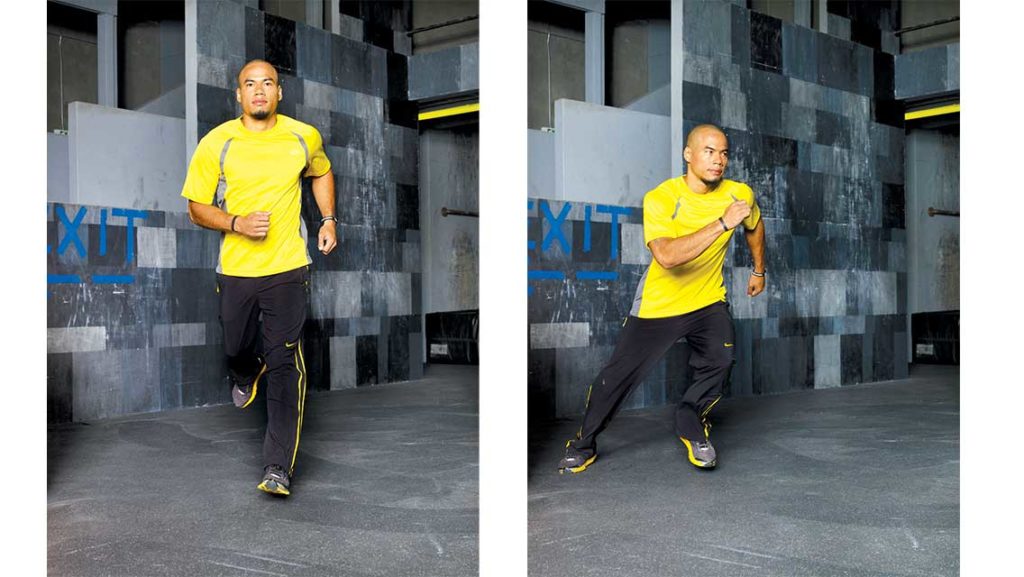
- In an open space, jog forward, backward and to both sides to help “switch on” your spatial awareness. Stay on the balls of your feet, emphasizing relaxation and ease of movement.
Duration: Three minutes.
Quadrupedal Movement (“Q.M.”)
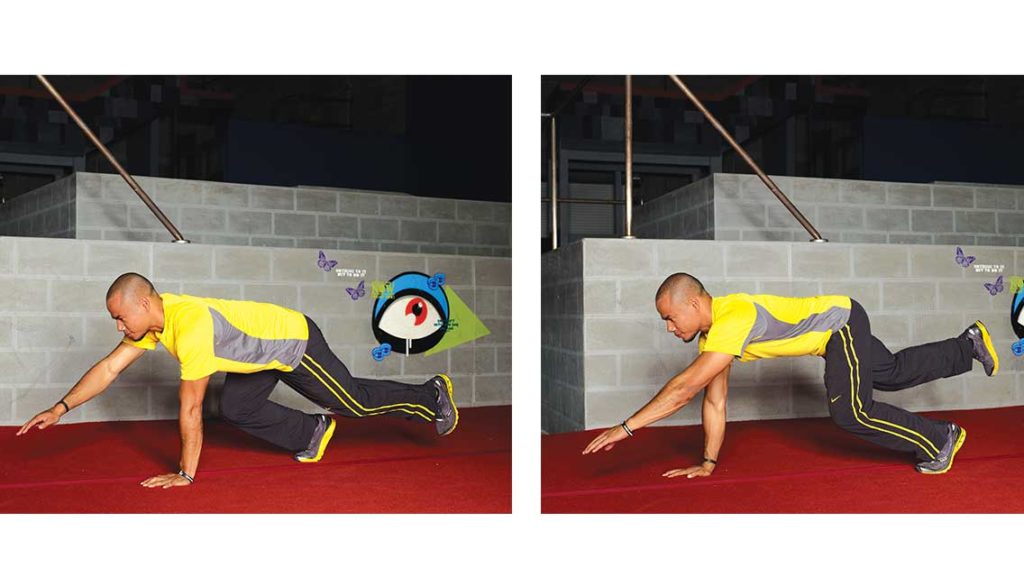
- Assume an all-fours, hands-and-feet position with your hands and feet slightly wider than shoulder width. Bend your knees and elbows slightly, look forward, and distribute your weight comfortably among all four of your points of contact with the floor.
- Simultaneously lift your right hand and your left foot a few inches off the floor, step them several inches forward, and return them to the floor.
- Repeat the same movement with your left hand and your right foot, and continue moving forward, alternating sides on each step.
A Word From the Pros:
Q.M. is an essential skill for traceurs, who often have to move seamlessly between bipedal and quadrupedal movements — while vaulting, scurrying and scrambling, for example. “There are all kinds of variations on the basic Q.M. pattern,” says Meeuwenberg. “We play with all of them in warm-ups: moving forward, backward, sideways, and up and down stairs.” Work on improving your skill so you can perform Q.M. effortlessly in any direction at any time.
Duration: Two to three minutes — up to five to seven minutes, optimally — resting as needed.
The Workout
1. Bench Vaults
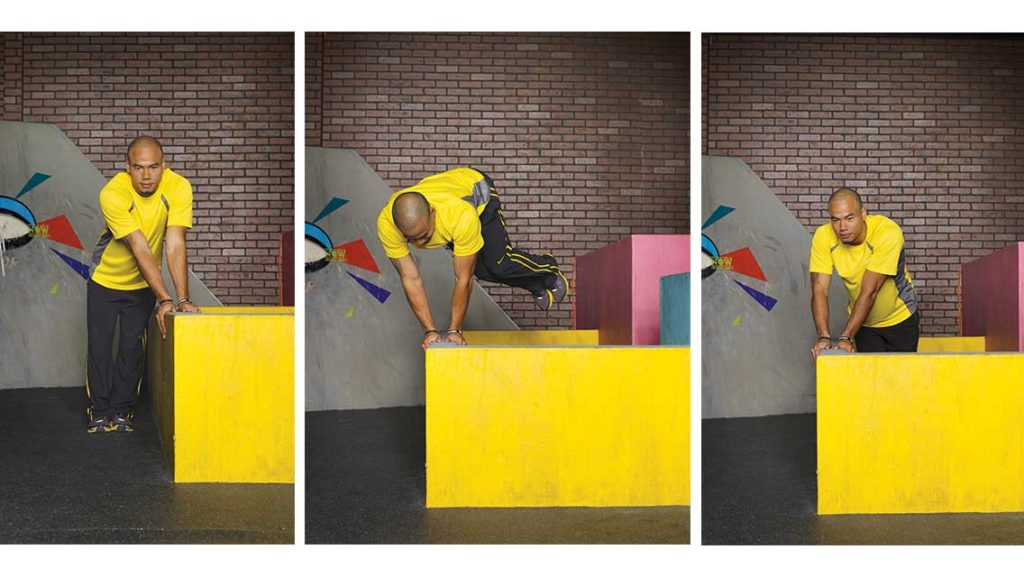
- Stand to the right side of a bench, railing or wall that you can comfortably vault, with your left hip or knee close to the bench.
- Place both hands securely on the bench, left hand on the far side of the bench, right hand on the side closest to your body. (If you’re using a railing, simply grab the bar with both hands, placing your dominant hand closer to you).
- Supporting your weight with your hands, jump your feet over to the opposite side of the bench, finishing the movement with your right hip or knee now touching the bench.
- Repeat the movement going in the opposite direction, going back and forth between the two sides of the bench, trying to land with your feet in exactly the same spot every time you vault over the bench.
A Word From the Pros: “The more an exercise resembles the task you’re actually training for,” says Myszka, “the more of a training effect you’ll see.” Because bench vaults resemble many of the vaulting-type movements you encounter during an actual parkour “jam,” or training session, they’re a great training tool for the budding traceur.
2. Reverse Q.M. Pushups

- Assume a standard pushup position, hands under your shoulders, body straight, neck in line with the spine.
- Simultaneously lift your right foot and your left hand off the floor, and step them both about 12 inches backward.
- In this position — left knee near left elbow, right leg extended — perform a pushup.
- Step backward with your left foot and your right hand.
- Perform a pushup in this position, this time with your right knee near your right elbow.
- Continue traveling backward, performing a pushup on each step.
Variations: To make the Reverse Q.M. Pushup easier, perform them descending stairs: head toward the topmost step, feet a few stairs down. To make it harder, perform them ascending stairs, with the opposite orientation (careful on this one!). In both cases, choose a gradually inclined staircase — ideally, one that doesn’t get a lot of traffic!
3. Box Jumps Plus Altitude Drops
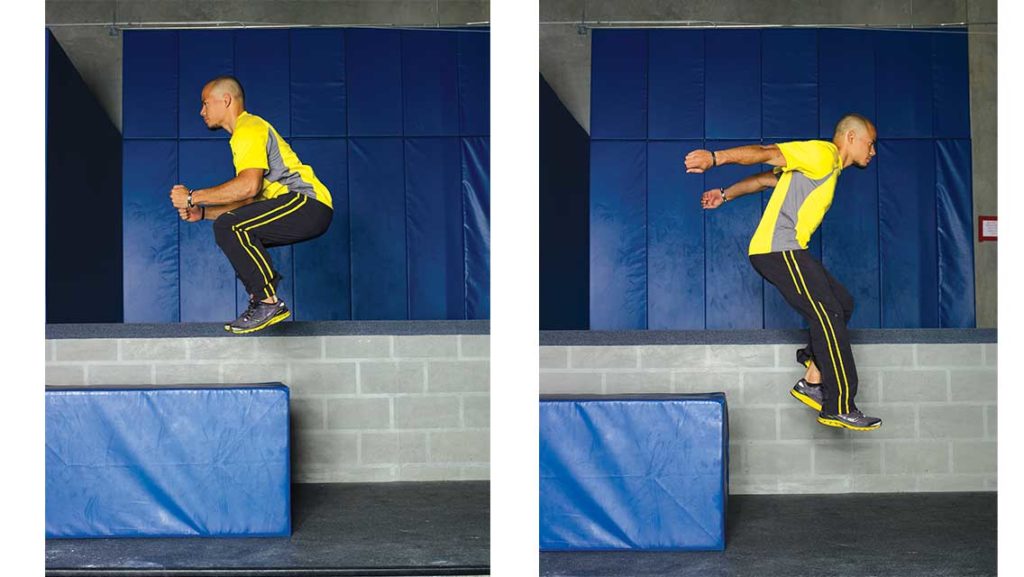
- Stand in front of a sturdy box, bench or platform that you feel you can comfortably jump onto, feet approximately hip width apart and parallel.
- Bend your knees, lean forward slightly, and drop your hips, swinging your arms behind you to gather momentum.
- Swing your arms forcefully forward and up, and jump onto the platform, taking off from both feet at the same instant.
- Land on both feet simultaneously, making as little sound as possible.
- Turn 180 degrees and jump down off the box, again landing as softly as possible, absorbing the shock of your landing through your ankles, knees and hips.
- Turn to face the box again and repeat for as many perfect reps as possible in 30 seconds.
A Word From the Pros: To prevent injury, focus on landing softly and accurately — especially when coming off the box. “Most trainees focus excessively on the takeoff,” says Myszka. “But when you land, you’re coming down with a force equal to three to 12 times your body weight. You’ve got to learn to absorb those forces.
4. Traversing Pull-Ups
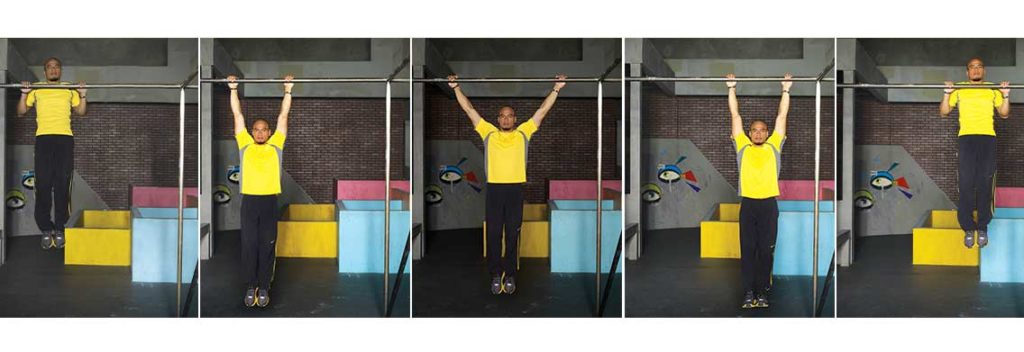
- Stand beneath the far left end of the longest pull-up bar (or sturdiest tree branch!) you can find.
- Jump up and grab the bar with a shoulder-width, overhand grip.
- Pull yourself up until your chin clears the bar. Return to the start position.
- Slide your right hand to the right along the bar until it is far away from your left.
- Slide your left hand along the bar to the right until your arms are again at shoulder width.
- Again perform a pull-up in this position.
- Alternate traveling left and right between repetitions.
A Word From the Pros: If you haven’t mastered the standard pull-up yet, keep working on it until you can do at least four or five in a row before tackling this version. Use an elastic band for assistance, or simply jump off the floor or a box to assist you with the “pulling” part of the move. Whatever level you’re at, Meeuwenberg suggests sticking with the overhand grip. That’s because ledges and walls don’t usually allow the traceur to use the slightly easier underhand-grip version.
Variation: Another advanced pull-up variation is the Release-and-Catch Pull-Up, in which you pull yourself up with enough explosive power that you can release the bar for a split
second at the top of the move.
5. Side Monkeys
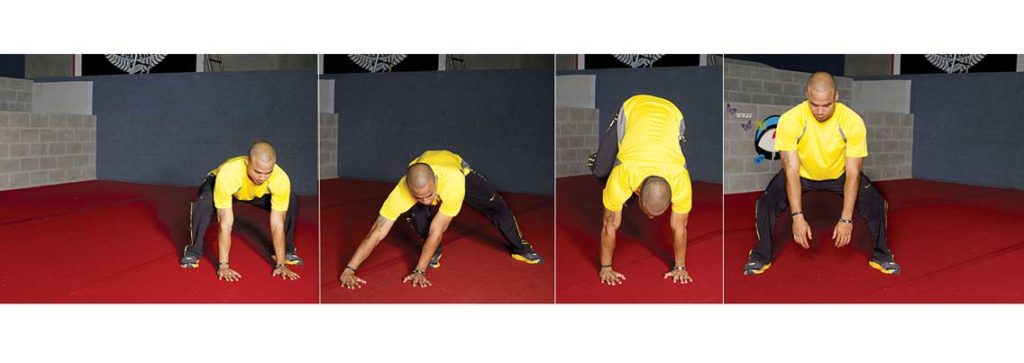
- Assume an all-fours, hands-and-feet position similar to that described in the warm-up, but with hands and feet closer together. Shift most of your weight onto your feet.
- Simultaneously lift both hands off the ground and move them a comfortable distance to the right.
- Shift your weight onto your hands and hop to the right, “catching up” with your hands.
- Continue the movement, shifting your weight between your hands and your feet, traveling again to your right. As you become faster and more fluid with the movement, you will start to resemble a monkey shuffling sideways.
- Perform: 45-second hop shuffle, moving first to your right, then to your left, between two objects placed about 5 yards apart
Run Free
Want to put some parkour moves into a more free-form workout? One common training practice among traceurs (practitioners of parkour) is to create an impromptu obstacle course based on found natural and man-made objects. Head out to a park — or an empty aerobics room at the gym — and seek out obstacles to jump onto, climb or vault over, or swing from.
Simple options include trees with sturdy, low-hanging branches, monkey bars, park benches, stairs, aerobic steps, I-beams, pull-up bars and scalable walls. “Adapt to your environment,” says Brian Orosco, professional traceur and competitor on the obstacle-course game show Ninja Warrior. “That’s a fundamental principle of parkour.”
Once you’ve decided on a route that includes multiple obstacles, figure out how you might use them: jumping or climbing over the park bench, swinging from the pull-up bar, “Q.M.-ing” up the stairs (see part 2 of “The Warm-Up” for a description). For an additional challenge, toss in some pushups, pull-ups, squats or jumps at appropriate points along the course. String the moves together in a logical sequence, aiming for a course that will take you about two to three minutes.
Then simply grab a stopwatch and see how fast you can complete the entire course, adjusting the length and intensity as needed in subsequent rounds. Repeat a total of four to eight times, resting for two minutes between attempts, for an exhilarating, high-flying workout.
Watch and Learn
For additional information on parkour, and to see some of the world’s greatest traceurs in action, check out the following Web sites:
www.tempestacademy.com
The official Web site for the training facility in Chatsworth, Calif. (just north of Los Angeles), which offers classes for all ages and skill levels, taught by renowned pros such as Brian Orosco and Victor Lopez.
www.americanparkour.com
Find how-to articles and videos, news, and links to parkour events and jam sessions sponsored by American Parkour (APK), the largest virtual parkour club in the United States.
www.skynative.com
Levi Meeuwenberg’s personal site showcases his highlights reel, his television appearances, and his impressive appearance on the obstacle-course game show Ninja Warrior.
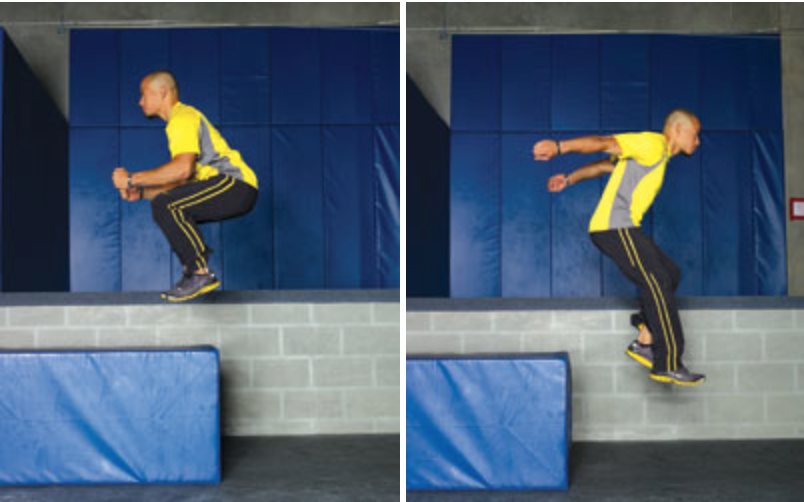
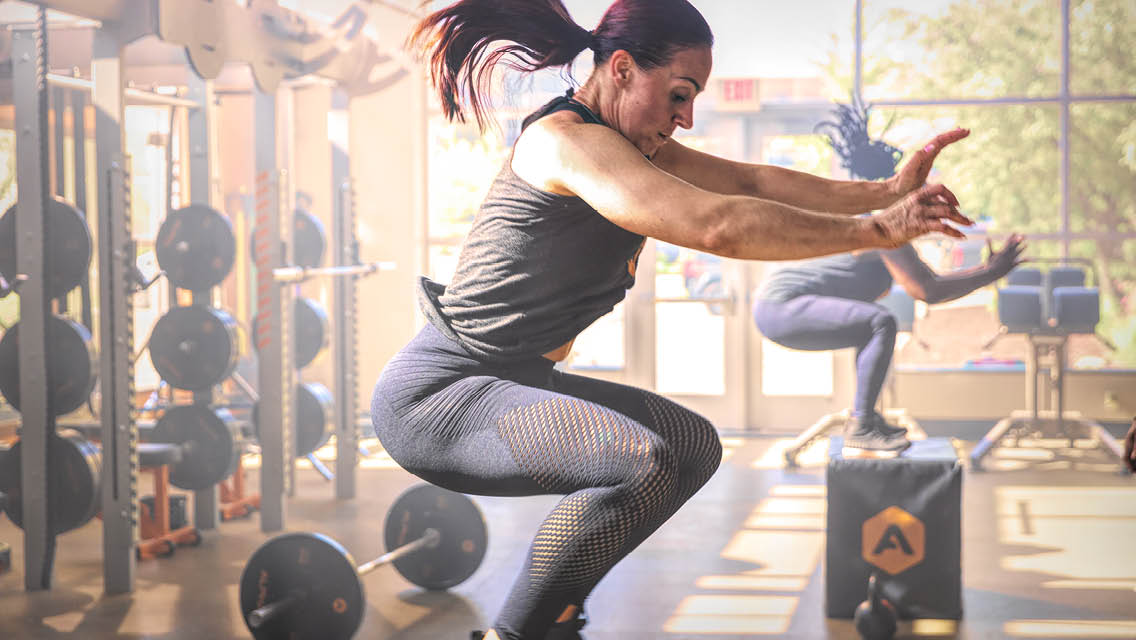
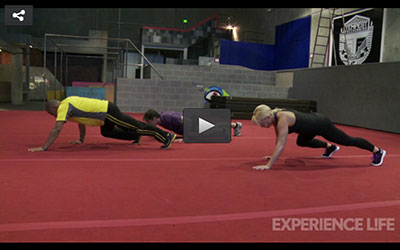
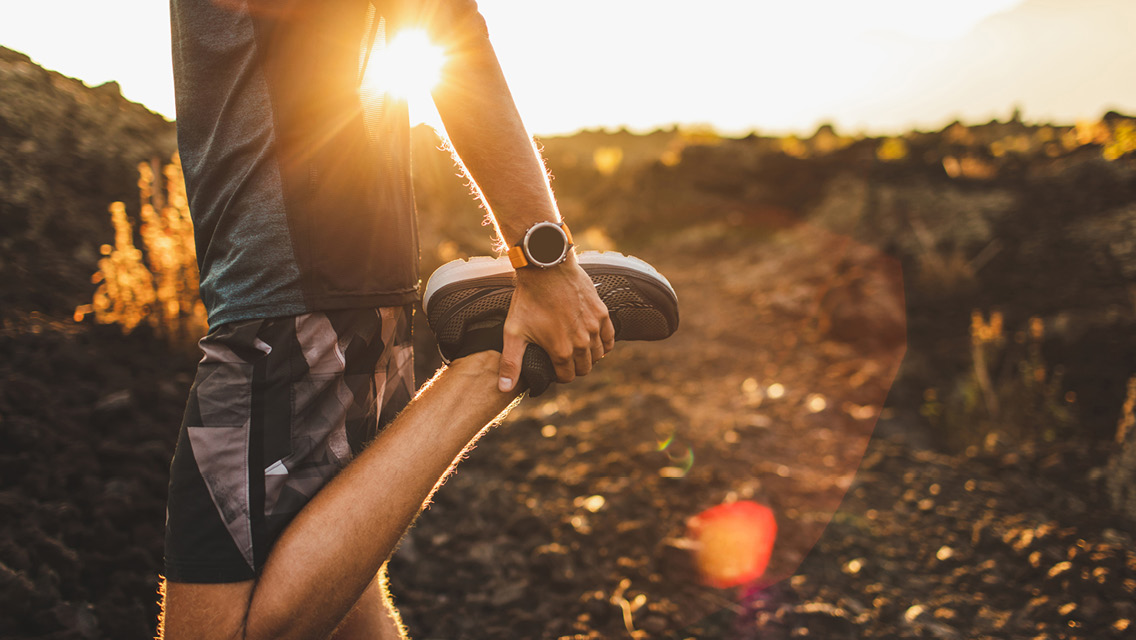
This Post Has 0 Comments